Phases of Project Life Cycle: 5 Key Phases Explained
Stakeholder Management: Process, Steps and Tools for Project Managers
Stakeholders—ranging from employees and customers to investors and community members—play a pivotal role in the success of any organization. Their interests, influence, and expectations can significantly impact a project's trajectory, making it essential for businesses to engage and manage them strategically.
This comprehensive guide will explore the various facets of stakeholder management, offering insights and practical advice on identifying and analyzing stakeholders, developing engagement and the most important stakeholder management skills.
1.Who is a Stakeholder in Project Management?
1.1 Definition of Stakeholders
Stakeholders are individuals or groups who have an interest in or are affected by the activities and outcomes of a project or organization. They can influence or be influenced by the project's objectives, deliverables, and overall success.
There are two categories of external stakeholder management and internal stakeholder management so it makes sense to split stakeholders into different types:
- Internal Stakeholders: These are individuals or groups within the organization, such as employees, managers, and board members. They are directly involved in the organization's operations and are often highly invested in its success.
- External Stakeholders: These are individuals or groups outside the organization, such as customers, suppliers, investors, regulators, and the community. They can influence the organization through their interactions and expectations.
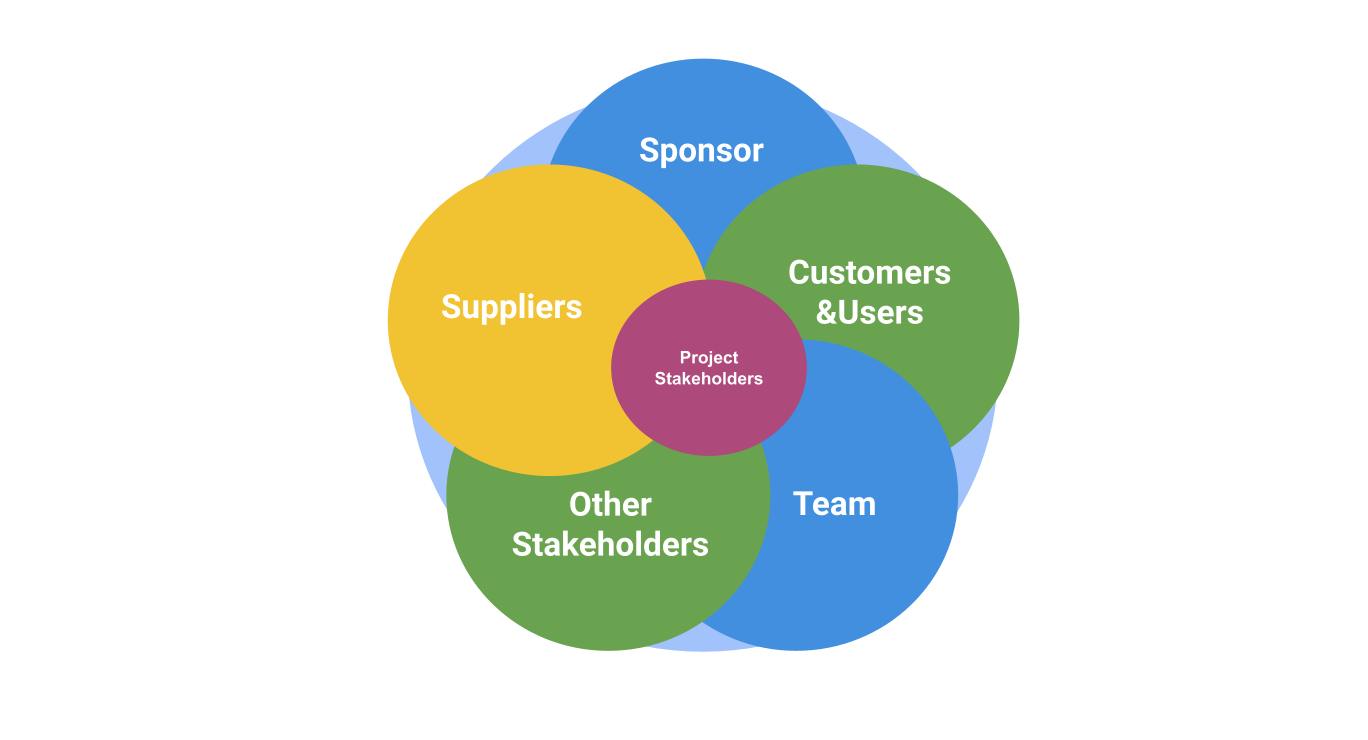
Additionally, stakeholders can be classified as primary or secondary:
- Primary Stakeholders: These are the main individuals or groups directly affected by the organization's activities. Their support is critical for the project's success. Examples include employees, customers, and investors.
- Secondary Stakeholders: These stakeholders are indirectly affected by the organization's activities. They might not have a direct impact on the project's outcome but still hold significant influence. Examples include media, advocacy groups, and the general public.
1.2 Identifying Stakeholders
Identifying stakeholders is a critical step in stakeholder management. It involves recognizing all individuals or groups who may have an interest in or be affected by the project or organization. Several techniques and tools can help in this process:
Examining Project Documents (project contract and other related documents)
Brainstorming: Consider all possible individuals and groups that might be impacted by or have an interest in the project. To make this process easier, answer these key questions:
- Who requested the project?
- Who will use the project's results?
- Who needs to alter their work due to the project?
- Who makes decisions regarding the project?
- Who allocates or withdraws project resources?
- Who influences decision-makers?
2. What is Stakeholder Register in Project Management?
When talking about the stakeholder management, it’s important to understand that it revolves around the creation of a stakeholder register and is built around it.
The stakeholder register is a critical project management tool used to document and manage all individuals or groups that have an interest in the project's outcomes. It serves as a comprehensive directory of stakeholders, detailing their roles, interests, influence, and expectations regarding the project.
The primary purpose of the stakeholder register is to identify stakeholders and ensure their appropriate involvement throughout the project. It's a dynamic document that evolves as the project progresses, unlike the more static project charter.

In the stakeholder register, which is represented in the table, capture the following details:
- Name
- Role in the project
- Position and department
- Immediate supervisor
- Contact information
- Preferred communication method
- Main expectations
- Key requirements
- Influence on the project
- Attitude towards the project/Power
- Interest in the project
🔔 Download the stakeholder register template
3. Stakeholder Analysis
3.1 Purpose of Stakeholder Analysis
Stakeholder analysis is a crucial process in stakeholder management that involves identifying the needs, interests, and potential impact of stakeholders on a project or organization. The primary purpose of stakeholder analysis is to:
- Understand the perspectives and concerns of different stakeholders.
- Assess their influence and importance in relation to the project.
- Develop strategies to engage and communicate effectively with them.
3.2 Conducting Stakeholder Analysis
After we compiled a list of all potential stakeholders and captured the key information in the stakeholder register, we’re ready to start the analysis:
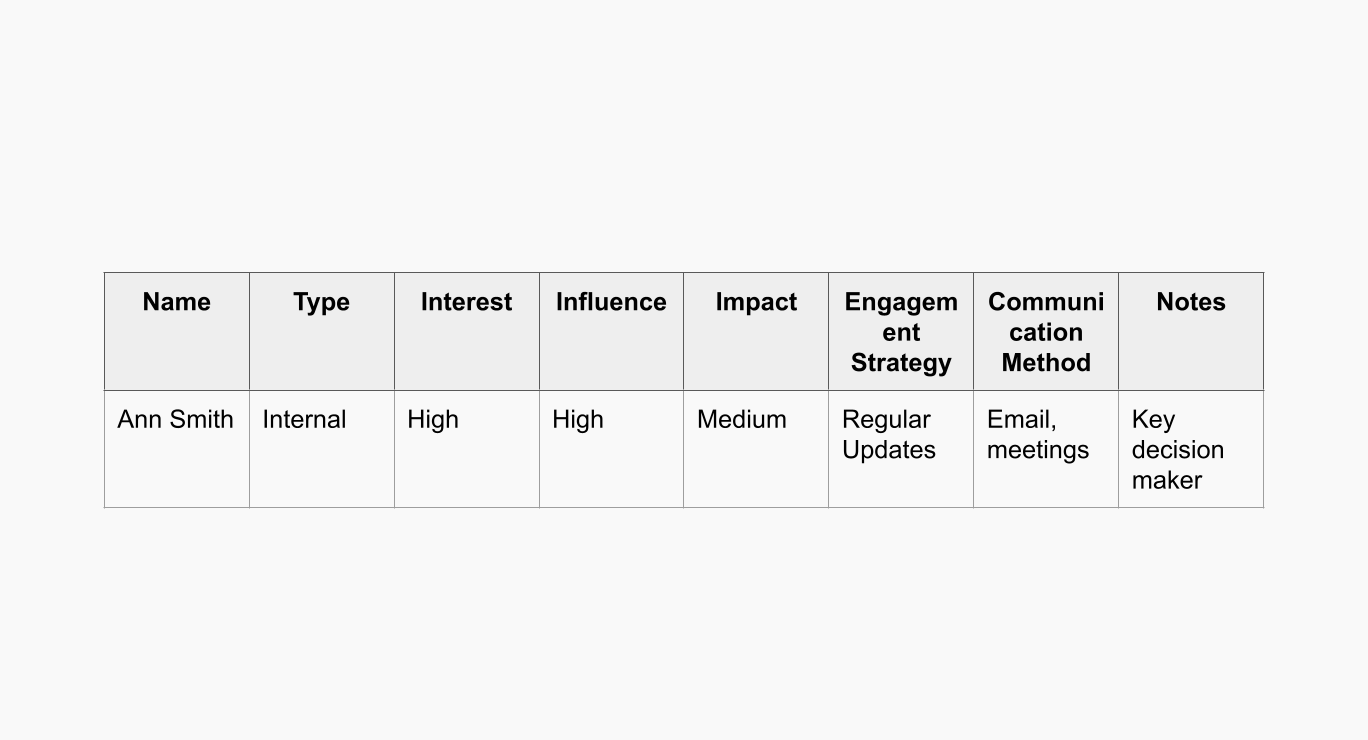
*Stakeholder Analysis Template
- Assess Stakeholders: Evaluate each stakeholder's level of interest, influence, and impact on the project. This assessment helps categorize stakeholders and understand their relative importance.
- Classify Stakeholders: Group stakeholders based on their influence and interest using stakeholder management tools like the Power/Interest Grid and Stakeholder Management Matrix. This classification aids in prioritizing engagement efforts.
Key tools and methods for conducting stakeholder analysis in project management include:
SWOT Analysis
This tool assesses the strengths, weaknesses, opportunities, and threats related to stakeholder engagement. It helps identify areas where stakeholders can contribute positively or where potential conflicts may arise.
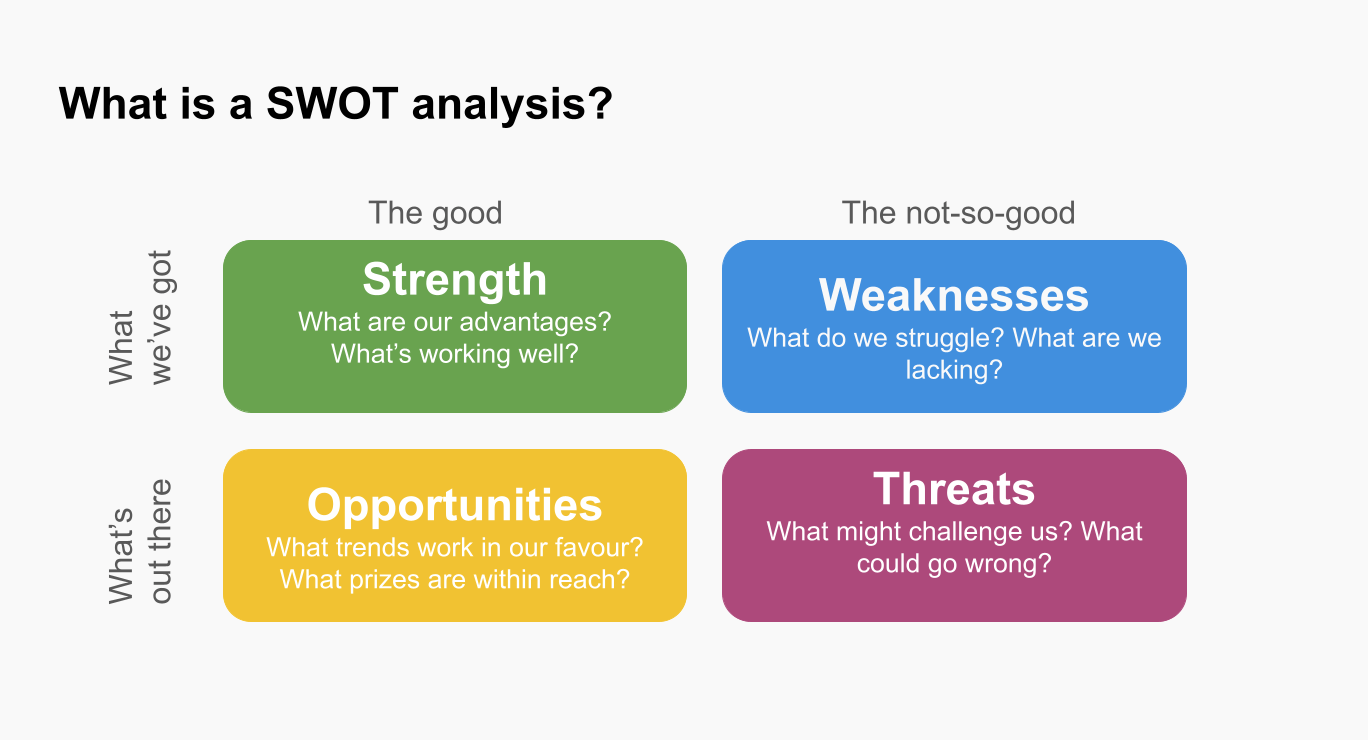
PESTLE Analysis
This framework evaluates the external environment's political, economic, social, technological, legal, and environmental factors that may influence stakeholders. It provides a broader context for understanding stakeholder dynamics.
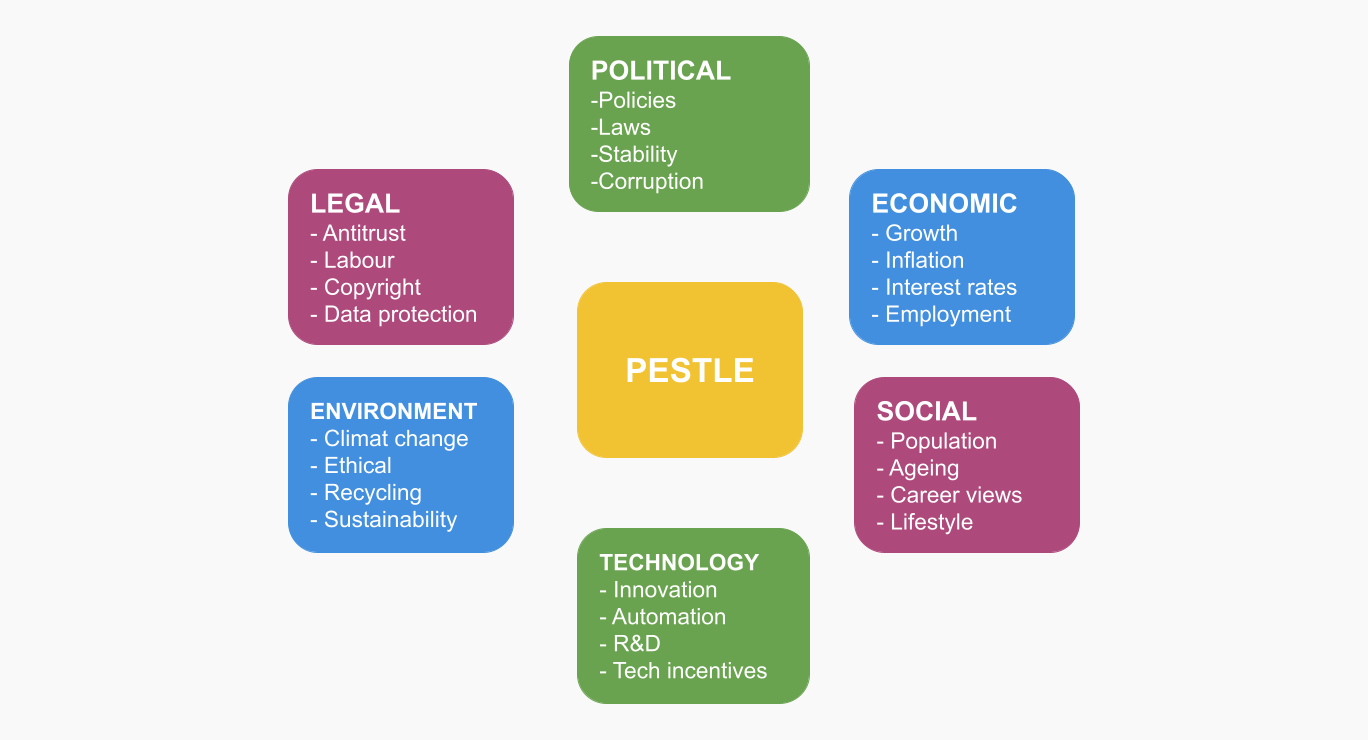
3.3 Prioritizing Stakeholders
Once stakeholders have been identified and assessed, the next step is to prioritize them based on specific criteria. Prioritization helps focus resources and efforts on stakeholders who are most critical to the project's success. Criteria for prioritization typically include:
- Power: The ability of a stakeholder to influence project outcomes.
- Interest: The level of concern or involvement a stakeholder has in the project.
- Influence: The capacity of a stakeholder to affect the project's direction or decisions.
Examples of prioritization methods include:
Power/Interest Grid
This matrix plots stakeholders on a grid based on their power and interest levels. Stakeholders in the high-power, high-interest quadrant are prioritized for close engagement, while those with low power and interest may require minimal attention.
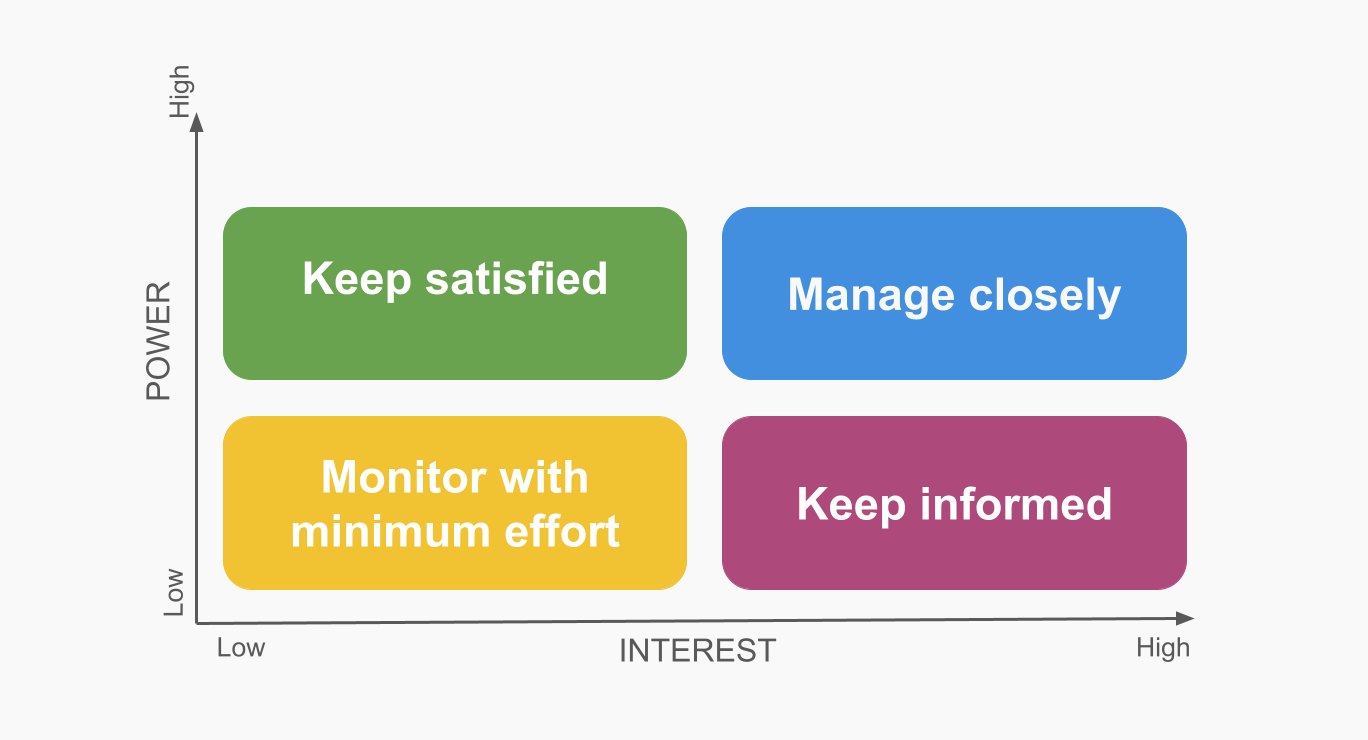
- Low interest, low influence: Monitor these stakeholders with minimal effort.
- High influence, low interest: Keep them satisfied to avoid negative impacts.
- Low influence, high interest: Inform them regularly to keep them engaged.
- High influence, high interest: Work closely with these stakeholders to ensure their needs are met and expectations managed.
4. Stakeholder Engagement
4.1 Engagement Stakeholder Management Strategy
Effective stakeholder engagement begins with a well-thought-out plan that outlines how to communicate and interact with stakeholders throughout the project lifecycle. Planning engagement strategies involves several key steps:
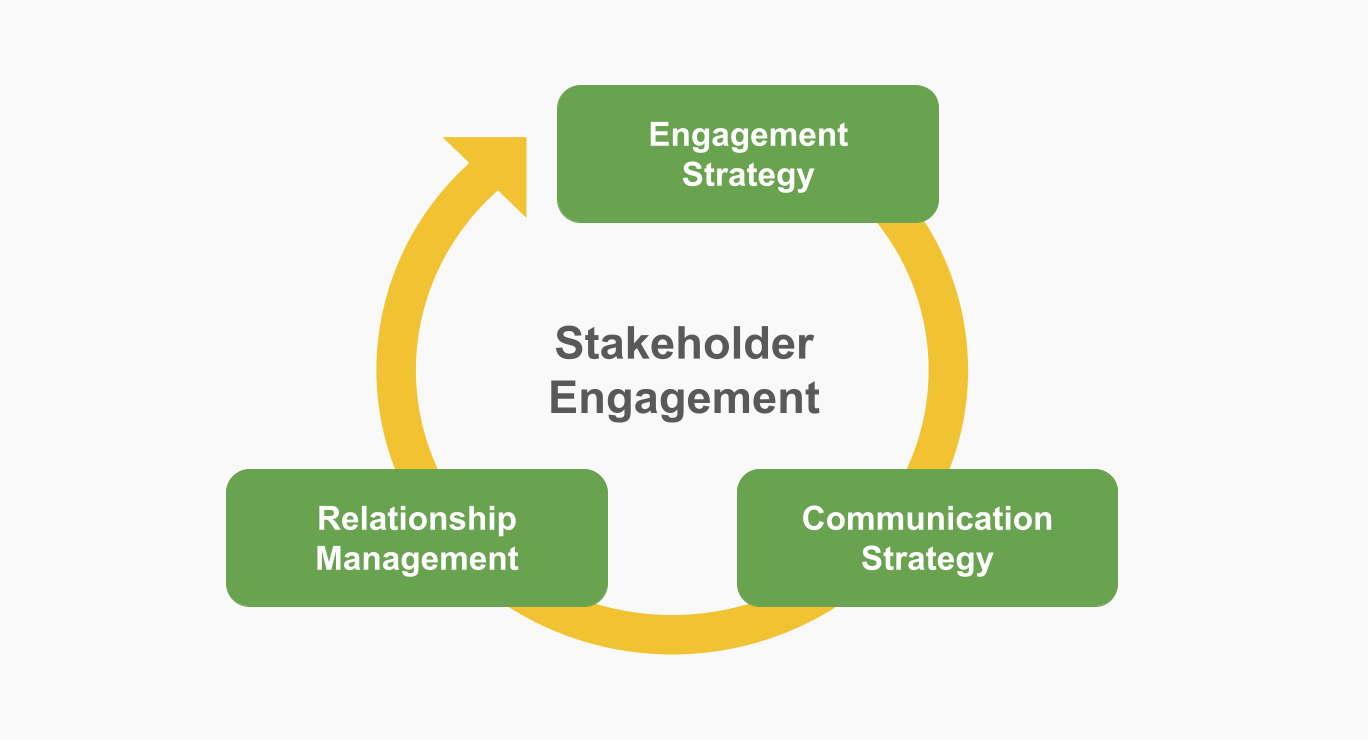
- Define Objectives: Clearly outline the goals of stakeholder engagement. These could include gaining support, minimizing opposition, gathering input, or simply keeping stakeholders informed.
- Identify Key Messages: Develop core messages tailored to the needs and interests of different stakeholder groups. Ensure that these messages align with the project's objectives and values.
- Select Communication Channels: Choose the most effective channels to reach each stakeholder group. This could range from formal reports and meetings to social media updates and informal conversations.
- Develop a Schedule: Create a timeline for regular updates and interactions with stakeholders. Consistent and timely communication helps build trust and keeps stakeholders engaged.
4.2 Communication Strategies
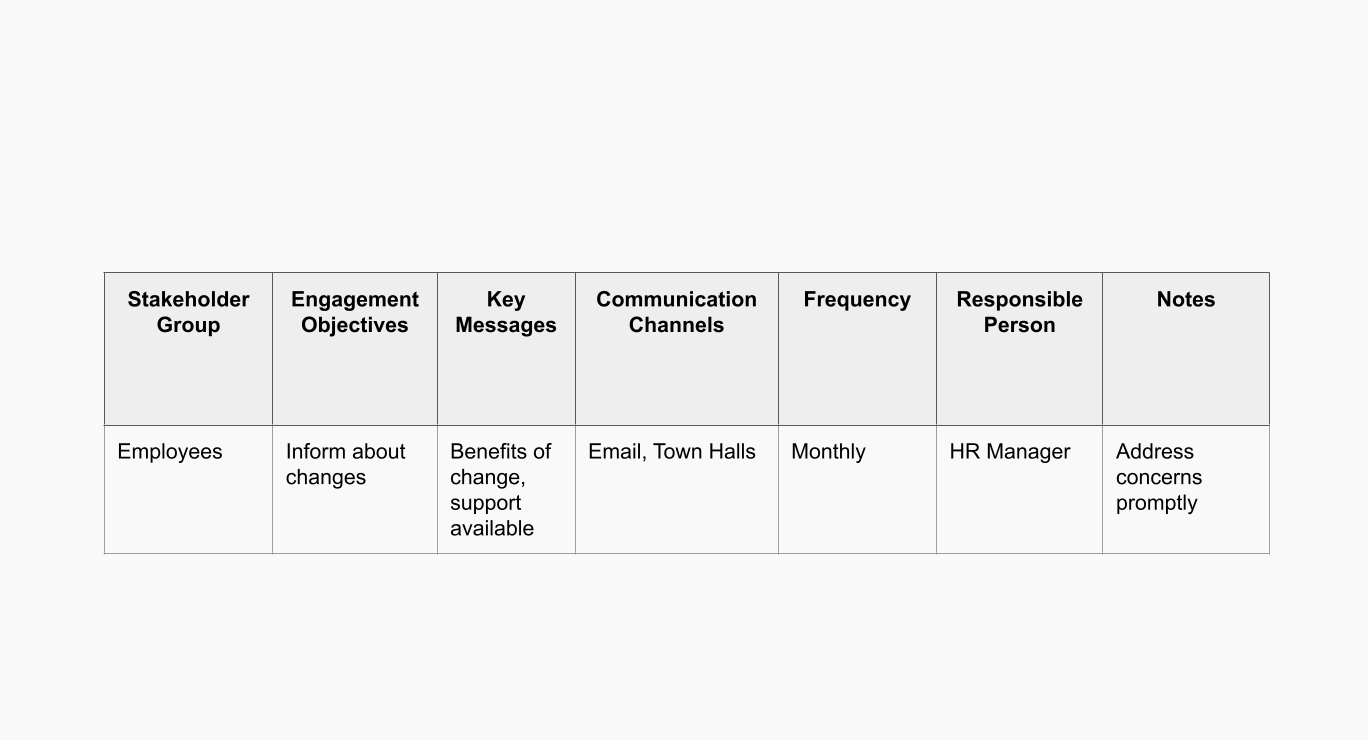
*Stakeholder management plan template
Effective communication is at the heart of successful stakeholder engagement. Different stakeholders have different needs and preferences, so it's important to tailor communication strategies accordingly. Key elements of effective communication include:
- Clarity and Transparency: Ensure that all communications are clear, concise, and honest. Avoid jargon and technical language that may confuse stakeholders.
- Two-Way Communication: Encourage open dialogue and feedback from stakeholders. This helps to build trust and ensures that stakeholders feel heard and valued.
- Tailored Messages: Customize messages based on the stakeholder's interest, influence, and information needs. For example, detailed technical updates may be appropriate for expert stakeholders, while high-level summaries may suffice for others.
- Regular Updates: Keep stakeholders informed about project progress, changes, and challenges. Regular updates help maintain engagement and prevent surprises.
4.3 Stakeholder Relationship Management
Building strong, positive relationships with stakeholders is essential for long-term success. This involves not only regular communication but also genuine engagement and collaboration. Techniques for building relationships include:
- Trust-Building: Establish trust by being reliable, consistent, and transparent. Fulfill commitments and demonstrate accountability in all interactions.
- Active Listening: Pay attention to stakeholders' concerns, suggestions, and feedback. Show empathy and understanding, and incorporate their input into decision-making processes when possible.
- Personal Engagement: Take the time to understand each stakeholder's unique perspective and needs. Personalize interactions to show that you value their contribution.
- Conflict Management: Address conflicts promptly and constructively. Use negotiation and problem-solving techniques to find mutually beneficial solutions and maintain positive relationships.
4.4 Stakeholder Engagement Checklist
Identification and Analysis:
- Have all potential stakeholders been identified?
- Has a thorough stakeholder analysis been conducted?
- Are stakeholders categorized by their interest, influence, and impact?
Planning:
- Are clear engagement objectives defined?
- Are key messages tailored to each stakeholder group?
- Are appropriate communication channels selected?
- Is there a detailed engagement schedule?
Implementation:
- Are engagement activities conducted as per the plan?
- Is communication with stakeholders clear, consistent, and transparent?
- Are feedback mechanisms in place?
Monitoring and Evaluation:
- Are stakeholder engagement metrics being tracked?
- Is stakeholder feedback regularly collected and analyzed?
- Are engagement strategies adjusted based on feedback and evaluation?
5. Implementing Stakeholder Management
5.1 Integration with Project Management
Stakeholder management is an integral part of project management and should be embedded into every phase of the project lifecycle. Here's how to effectively integrate stakeholder management with project management:
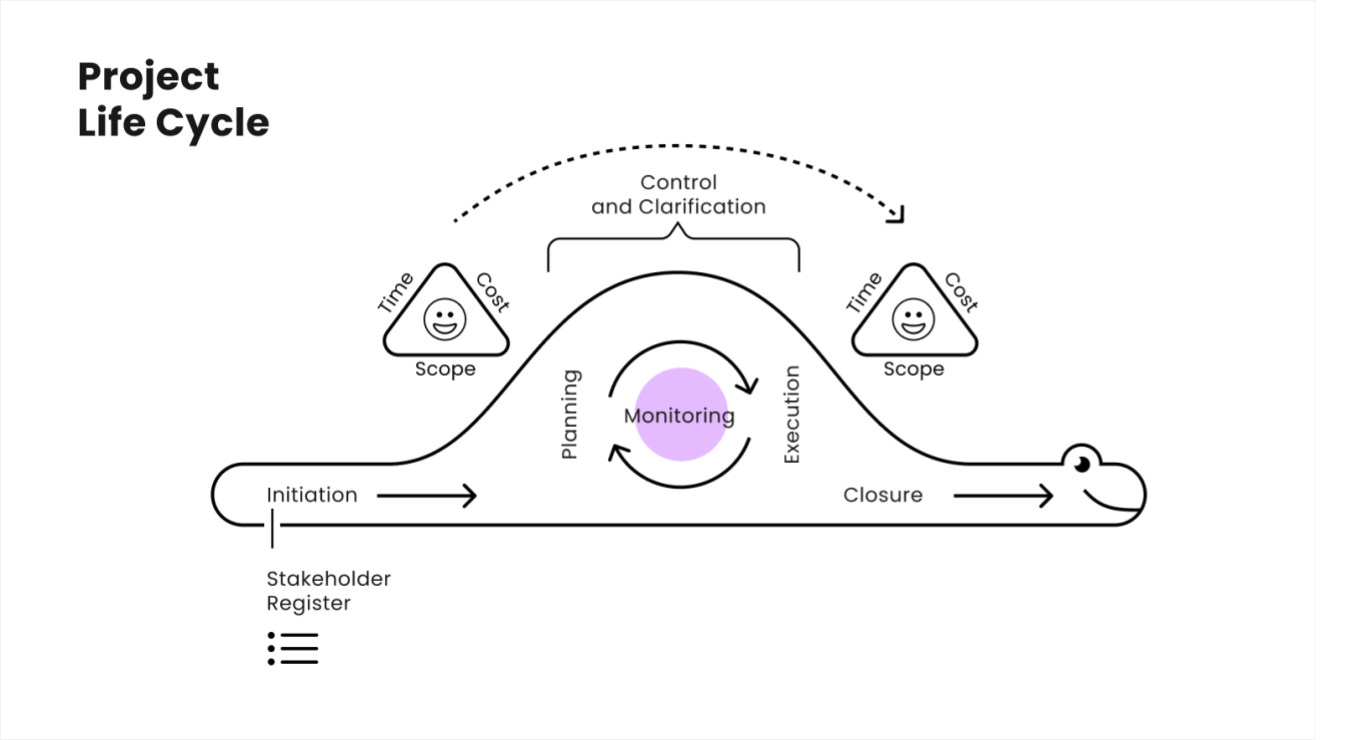
1. Project Initiation:
- Stakeholder Identification: Identify and document all potential stakeholders.
- Initial Engagement: Communicate the project’s objectives and scope to key stakeholders to set expectations.
2. Project Planning:
- Stakeholder Analysis: Conduct a detailed analysis to understand stakeholder needs, influence, and interests.
- Engagement Plan: Develop a comprehensive stakeholder engagement plan, outlining strategies, communication methods, and schedules.
3. Project Execution:
- Regular Communication: Implement the communication strategies defined in the engagement plan. Ensure regular updates and open channels for feedback.
- Engagement Activities: Conduct meetings, workshops, and other engagement activities to maintain stakeholder involvement and address concerns.
4. Project Monitoring and Controlling:
- Track Engagement: Use tools and metrics to monitor stakeholder engagement and satisfaction.
- Adjust Strategies: Based on feedback and engagement levels, adjust the strategies to better meet stakeholder needs.
5. Project Closing:
- Final Review: Conduct a final review with stakeholders to gather feedback and lessons learned.
- Closure Communication: Ensure stakeholders are informed about project closure and next steps.
5.2 Tools and Software
Several tools and software solutions can facilitate stakeholder management by streamlining processes and enhancing communication. Some of the most effective tools include:

Visualization built with Planyway
- Customer Relationship Management (CRM) Systems: CRM systems like Salesforce or HubSpot can help manage stakeholder information, track interactions, and analyze engagement data.
- Project Management Platforms: Tools like Planyway, Asana, Trello, and Microsoft Project offer features for stakeholder collaboration, communication, and task management.
- Stakeholder Mapping Software: Tools like Powernoodle or Smaply help visualize stakeholder relationships, influence, and engagement strategies.
- Communication Tools: Platforms such as Slack, Microsoft Teams, and Zoom facilitate real-time communication and collaboration with stakeholders.
5.3 How to Measure Stakeholder Management
Continuous monitoring and evaluation are crucial for effective stakeholder management. This involves regularly assessing the effectiveness of engagement strategies and making necessary adjustments. Key techniques include:
- Surveys and Feedback Forms: Regularly gather feedback from stakeholders to assess their satisfaction and identify areas for improvement.
- Engagement Metrics: Track metrics such as stakeholder participation rates, feedback frequency, and sentiment analysis to measure engagement levels.
- Performance Reviews: Conduct periodic reviews to evaluate the success of stakeholder management activities against predefined objectives.
- Adjusting Strategies: Based on the insights gained from monitoring and evaluation, adjust the engagement strategies to better align with stakeholder needs and project goals.
5.4 Stakeholder Feedback Form
1. Stakeholder Information:
- Name:
- Organization:
- Role:
- Contact Information:
2. Stakeholder Management Interview Questions:
- How satisfied are you with the project's communication so far? (Very Satisfied, Satisfied, Neutral, Unsatisfied, Very Unsatisfied)
- What aspects of the project do you find most beneficial?
- Are there any concerns or issues you would like to raise?
- How can we improve our engagement with you?
- Any additional comments or suggestions?
6. Case Studies
6.1 Successful Stakeholder Management Examples
Case Study 1: Construction Project in Urban Area

Background: A construction company undertook a large infrastructure project in a densely populated urban area. The project faced potential resistance from local residents concerned about noise, disruption, and environmental impact.
Stakeholder Management Strategies:
- Early Engagement: The company held town hall meetings before starting the project to inform residents about the project scope, timeline, and benefits.
- Open Communication Channels: They established a dedicated hotline and email address for residents to voice concerns and ask questions.
- Regular Updates: Monthly newsletters were distributed to keep residents informed about project progress and upcoming activities.
- Environmental Measures: The company implemented noise reduction techniques and ensured that construction activities were confined to specific hours to minimize disruption.
Outcome: By proactively engaging with the community and addressing concerns transparently, the company gained the support of local residents, leading to smoother project execution and enhanced community relations.
Case Study 2: Technology Implementation in a Healthcare Organization

Background: A healthcare organization planned to implement a new electronic health record (EHR) system. The project involved significant changes in workflow, impacting doctors, nurses, administrative staff, and patients.
Stakeholder Management Strategies:
- Inclusive Planning: Stakeholders from all affected groups were involved in the planning phase to provide input and feedback.
- Training Programs: Comprehensive training sessions were organized to help staff adapt to the new system.
- Pilot Testing: The EHR system was initially implemented in a few departments to gather feedback and make necessary adjustments before a full rollout.
- Feedback Mechanisms: Continuous feedback was solicited from staff and patients to identify and resolve issues promptly.
Outcome: The inclusive approach and continuous support resulted in a smooth transition to the new system, with high levels of adoption and satisfaction among staff and patients.
6.2 Challenges and Solutions
Challenge 1: Resistance to Change
Background: A multinational corporation faced significant resistance from employees when introducing a new performance management system. Employees were concerned about increased workload and transparency.
Solution:
- Transparent Communication: The management held multiple sessions to explain the benefits of the new system and how it would improve performance evaluations.
- Involvement in Development: Employees were invited to participate in focus groups to provide input on the system’s features and usability.
- Gradual Implementation: The system was rolled out in phases, allowing employees to adjust gradually and provide feedback at each stage.
Outcome: Employee involvement and phased implementation helped alleviate concerns, leading to successful adoption of the new performance management system.
Challenge 2: Community Opposition to Environmental Impact
Background: An energy company planned to develop a wind farm in a rural area. The project faced opposition from local farmers and environmental groups concerned about land use and wildlife disruption.
Solution:
- Collaborative Planning: The company worked closely with local stakeholders to identify and address their concerns. This included adjusting the project layout to minimize land impact.
- Environmental Safeguards: Measures were implemented to protect local wildlife, and an environmental monitoring program was established.
- Benefit Sharing: The company introduced community benefit schemes, such as local employment opportunities and funding for community projects.
Outcome: By addressing concerns collaboratively and sharing project benefits, the company gained local support and successfully proceeded with the wind farm development.
7. How to Improve Stakeholder Management: Future Trends
7.1 Technological Advancements
The landscape of stakeholder management is evolving rapidly, driven by technological advancements that are transforming how organizations engage with their stakeholders.
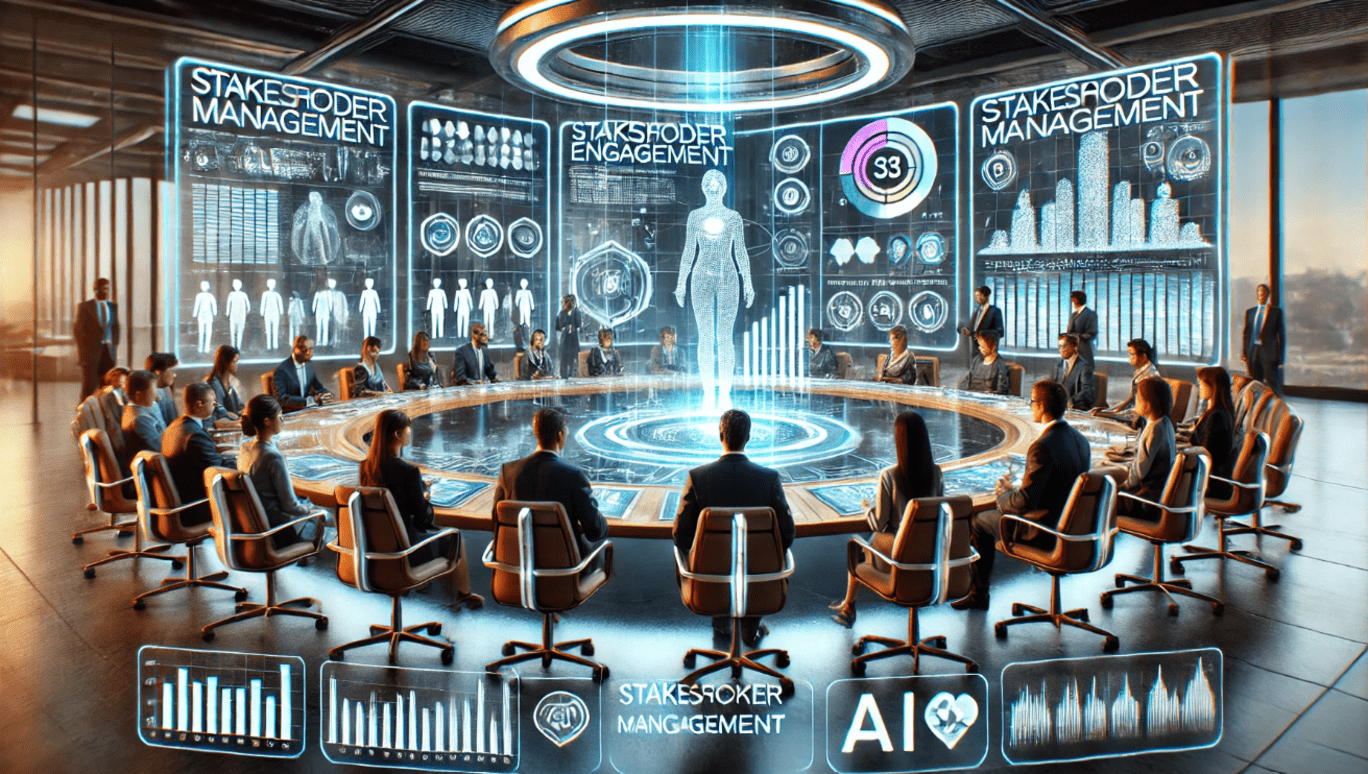
Key trends include:
Artificial Intelligence (AI) and Machine Learning (ML):
- Predictive Analytics: AI and ML can analyze vast amounts of data to predict stakeholder behaviors and preferences, enabling organizations to tailor their engagement strategies more effectively.
- Chatbots and Virtual Assistants: These tools can provide instant responses to stakeholder inquiries, enhancing communication efficiency and satisfaction.
Big Data:
- Data-Driven Insights: Big data analytics allow organizations to gain deeper insights into stakeholder sentiments and trends. This information can inform strategic decisions and improve stakeholder engagement.
- Personalization: Leveraging big data, organizations can create highly personalized communication and engagement plans, addressing individual stakeholder needs and preferences.
Blockchain Technology:
- Transparency and Trust: Blockchain can enhance transparency in stakeholder transactions and interactions, building greater trust. It ensures data integrity and can be used for secure voting and decision-making processes.
- Decentralized Decision-Making: Blockchain facilitates decentralized decision-making, allowing stakeholders to participate in governance and project management in a secure and transparent manner.
7.2 Evolving Stakeholder Expectations

As stakeholder expectations continue to evolve, organizations must adapt their strategies to remain effective. Emerging trends in stakeholder expectations include:
Increased Demand for Transparency:
- Open Communication: Stakeholders expect organizations to be transparent about their operations, decision-making processes, and impacts. Providing regular, honest updates is crucial.
- Ethical Practices: Stakeholders are increasingly concerned about ethical practices, including sustainability, social responsibility, and fair treatment. Organizations must demonstrate their commitment to these values.
Greater Emphasis on Sustainability:
- Environmental Impact: Stakeholders are more aware of environmental issues and expect organizations to minimize their ecological footprint. Sustainable practices and green initiatives are becoming essential.
- Social Responsibility: Beyond environmental concerns, stakeholders expect organizations to contribute positively to society. This includes supporting local communities, ensuring fair labor practices, and promoting diversity and inclusion.
Enhanced Stakeholder Participation:
- Collaborative Engagement: Stakeholders want to be actively involved in decision-making processes. Organizations should create opportunities for meaningful stakeholder participation, such as advisory panels and co-creation workshops.
- Feedback Loops: Continuous feedback mechanisms are essential for understanding stakeholder needs and improving engagement strategies. Organizations should regularly solicit and act on stakeholder feedback.
7.3 Future Directions and Best Practices
To stay ahead in the evolving landscape of stakeholder management, organizations should consider the following future directions and best practices:
Adopt Agile Methodologies:
- Flexibility and Adaptability: Agile methodologies allow organizations to respond quickly to changing stakeholder needs and external conditions. Regular iterations and feedback loops ensure continuous improvement.
- Cross-Functional Teams: Agile encourages the formation of cross-functional teams that can address stakeholder concerns from multiple perspectives, enhancing problem-solving and innovation.
Invest in Technology and Training:
- Advanced Tools: Invest in the latest technologies that facilitate effective stakeholder management, such as AI, big data analytics, and blockchain.
- Skill Development: Ensure that teams are trained in using these technologies and are equipped with the skills needed to engage stakeholders effectively.
Emphasize Ethical Leadership:
- Integrity and Accountability: Ethical leadership fosters trust and credibility. Leaders should model integrity and accountability in all stakeholder interactions.
- Value-Driven Culture: Cultivate a culture that prioritizes stakeholder well-being, ethical practices, and social responsibility. This culture should be embedded in all organizational activities and decisions.
Continuous Improvement:
- Benchmarking and Best Practices: Regularly benchmark against industry best practices and strive for continuous improvement in stakeholder engagement strategies.
- Innovation and Creativity: Encourage innovation and creative solutions to address stakeholder needs and challenges. This can lead to more effective and engaging stakeholder management practices.
Why is Stakeholder Management Important?
Stakeholder management is essential because it aligns project goals and objectives with the interests of all involved parties, fostering clear communication and minimizing conflicts. By proactively addressing stakeholder concerns, it mitigates risks and secures crucial support and buy-in, which are vital for resource acquisition and cooperation.
Effective stakeholder management enhances an organization’s reputation, builds positive relationships, and ensures compliance with legal and ethical standards. It also provides valuable feedback for continuous improvement and innovation, promoting the sustainability and long-term success of projects and operations.
Conclusion
We hope that this article clearly answers the question of what is stakeholder management, provides you with lots of helpful insights about stakeholder management experience, and explains what are the four processes in project stakeholder management. Incorporating stakeholder mapping into this process is essential, as it helps identify and analyze the key players that can influence or be influenced by the project. In conclusion, effective stakeholder management is not a one-time activity but an ongoing process that requires continuous effort and adaptation. The original stakeholder management plan is updated at various stages throughout the project lifecycle to ensure it remains relevant and effective.
By committing to understanding and engaging stakeholders thoughtfully and strategically, organizations can achieve better project outcomes, build trust and loyalty, and foster a supportive environment for long-term success. As the landscape of stakeholder management continues to evolve, staying informed about emerging trends and best practices, including stakeholder mapping, will be essential for maintaining positive stakeholder relationships and driving organizational growth.
About the Author
Violetta Chernobuk is a skilled content strategist and writer at Planyway, specializing in crafting insightful and engaging articles on productivity and project management. With her keen eye for detail and a deep understanding of user needs, Violetta ensures that every piece of content is both informative and inspiring, helping readers optimize their workflows and stay ahead in their projects.
Resources:
Books:
- Freeman, R. E. (1984). Strategic Management: A Stakeholder Approach. Pitman Publishing Inc.
- Bourne, L. (2009). Stakeholder Relationship Management: A Maturity Model for Organisational Implementation. Gower Publishing.
Articles:
- Mitchell, R. K., Agle, B. R., & Wood, D. J. (1997). "Toward a Theory of Stakeholder Identification and Salience: Defining the Principle of Who and What Really Counts." Academy of Management Review, 22(4), 853-886.
- Greenwood, M. (2007). "Stakeholder Engagement: Beyond the Myth of Corporate Responsibility." Journal of Business Ethics, 74(4), 315-327.
Websites:
- Project Management Institute (PMI): www.pmi.org
- International Organization for Standardization (ISO): www.iso.org


